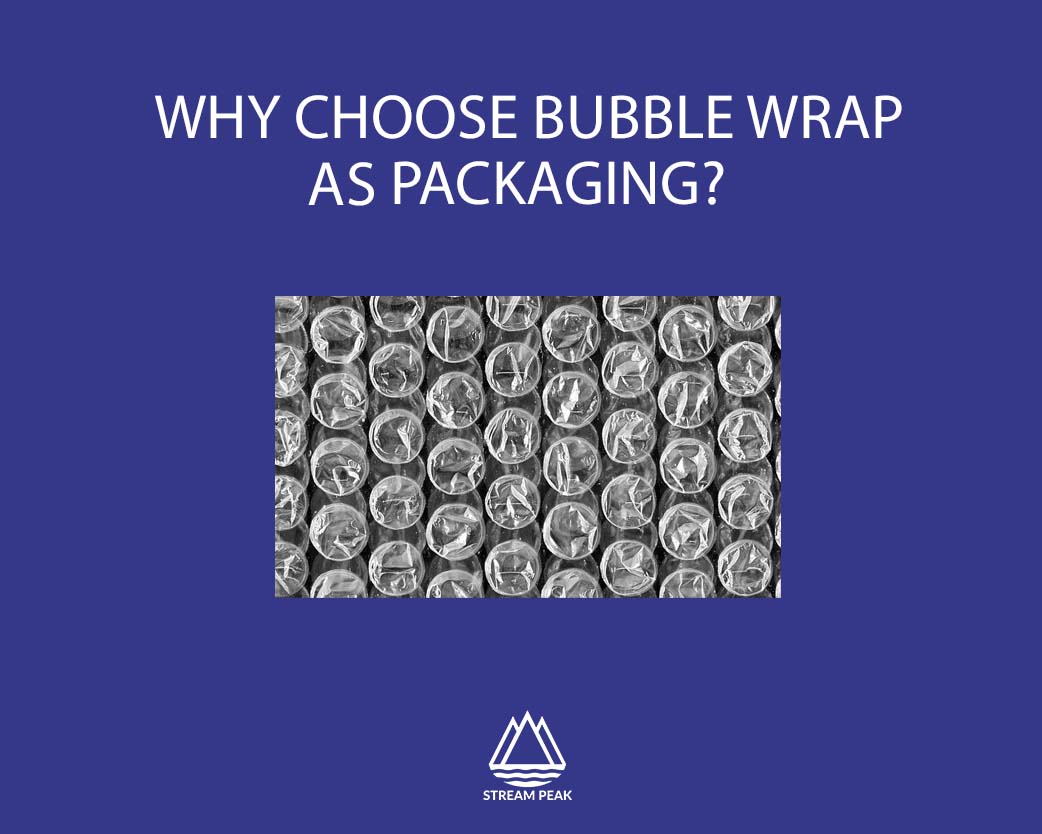
Why Choose Bubble Wrap as Packaging?
Transporting any package, whether delicate or not, necessitates additional caution. Among the many packaging materials available to protect parcels, bubble wrap offers significant advantages for packing products. Bubble wrap packaging is one of the materials that is effective and efficient.
How is Bubble Wrap Made?
Polyethylene is the raw material used to make bubble wrap, which is also used to make grocery bags, shampoo bottles, children’s toys, and even bullet-proof vests.
The polyethylene enters the bubble wrap factory in the form of beads (the size of a small pea). This beaded polyethylene is passed through a corkscrew, heated (a process known as extrusion), and melted into a liquid to form a transparent plastic layer.
This process results in two flat layers of film. One layer is applied to a steel cylinder with holes. A powerful vacuum pump inside a steel cylinder pulls the flat polythene layer tight over it to create the bubble. The second flat layer of film is then passed over the cylinder, laminating to the first layer to seal everything together and prevent air from escaping the bubbles.
Benefits
Protection from impact
Among other packaging materials, why use bubble wrap? Simply because it can give complete protection to items against any impact. Since it has air-filled bubbles, it will not allow any pressure to affect the items directly, creating a cushioning effect. Businesses can use multiple layers of bubble wrap to protect packages from vibration and shocks.
Ideal for Custom Packaging Requirements
Whether the item is large or small, bubble wrap packaging can protect and insulate it. It is also simple to cut with scissors to achieve the desired size and shape. Large bubble wrap sheets are ideal for wrapping or protecting many irregularly shaped items because they are pliable enough to cover the entire object. There are also custom bubble wrap sheets available for any item on the market.
Simple to Use and Saves Time
All that is needed is to wrap the bubble wrap around the products required to mail. Specific equipment or tools are not required to use bubble wrap. Furthermore, it will not take much time when packing the items because it is simple to use.
Lightweight
Regarding shipping rates, the item weight is sometimes a deciding factor. Nobody likes to spend extra shipping rates due to bulky packaging materials. Bubble wrap is never a problem because it is lightweight and will not add unnecessary weight. It is light because it is primarily made of air, with numerous layers of lightweight plastic for durability. One of the reasons bubble wrap is useful is that it can save money on shipping charges.
Cost-effective
Unlike other packing materials, bubble wrap is inexpensive and appropriate for small businesses or those that transport many individual goods. With bubble wrap, items would be well-packed for a low cost and will not arrive damaged at their destination.
How to choose bubble wrap
Bubble Wrap is available in four (4) standard sizes: 1/8′′, 3/16′′, 5/16′′, and 1/2′′. The size of the bubble refers to its height rather than its diameter. 1/8′′ is a less common size referred to as a “super small” bubble. Small bubbles are 3/16′′, medium bubbles are 5/16′′, and large bubbles are 1/2′′. The most common retail roll widths are 12′′ and 24′′, and the bubble wrap rolls are perforated every 12′′.
Medium bubble wrap is the best choice for less fragile, medium / larger items. Wrap the bubble cap around the item once more for maximum protection. Wrap the item in several layers of bubble wrap and tape it in place for extra protection. For the best protection, always wrap the top of the bubbles around items. For packaging delicate or fragile items, use super small or small 375mm*100m*10mm bubble wrap or place the item in a small bubble pouch.
Large bubble wrap is the most cost-effective way to fill void space inside a box. It is less expensive than peanuts, so many customers prefer it. Using more than one size of bubble wrap often provides the best protection, for example, by using a small bubble wrap to wrap a small, fragile item and then a large bubble wrap to fill the space inside the box.
Check the precise sizing measurements of the bubble wrap, and make sure that the length and width of the bubble wrap cover the items that need to be protected. Ensure that the bubble wrap is of high quality, and the best way to ensure that is to buy directly from a trustworthy manufacturer.
Conclusion
In conclusion, bubble wrap is also a cost-effective and efficient technique for shipping items to any location, aside from its adaptability and impact resistance. It comes in a variety of sizes to suit various applications’ needs.

